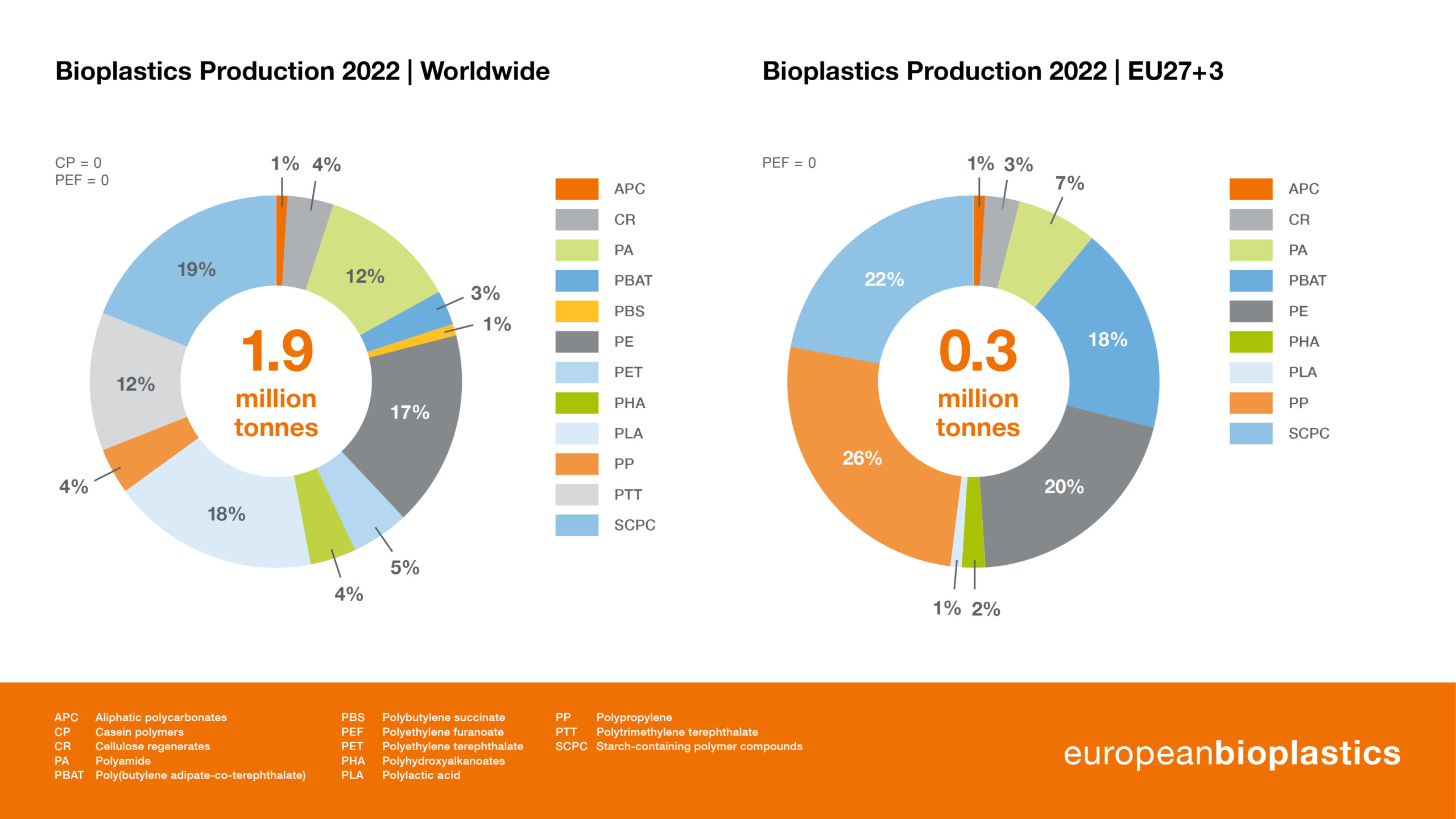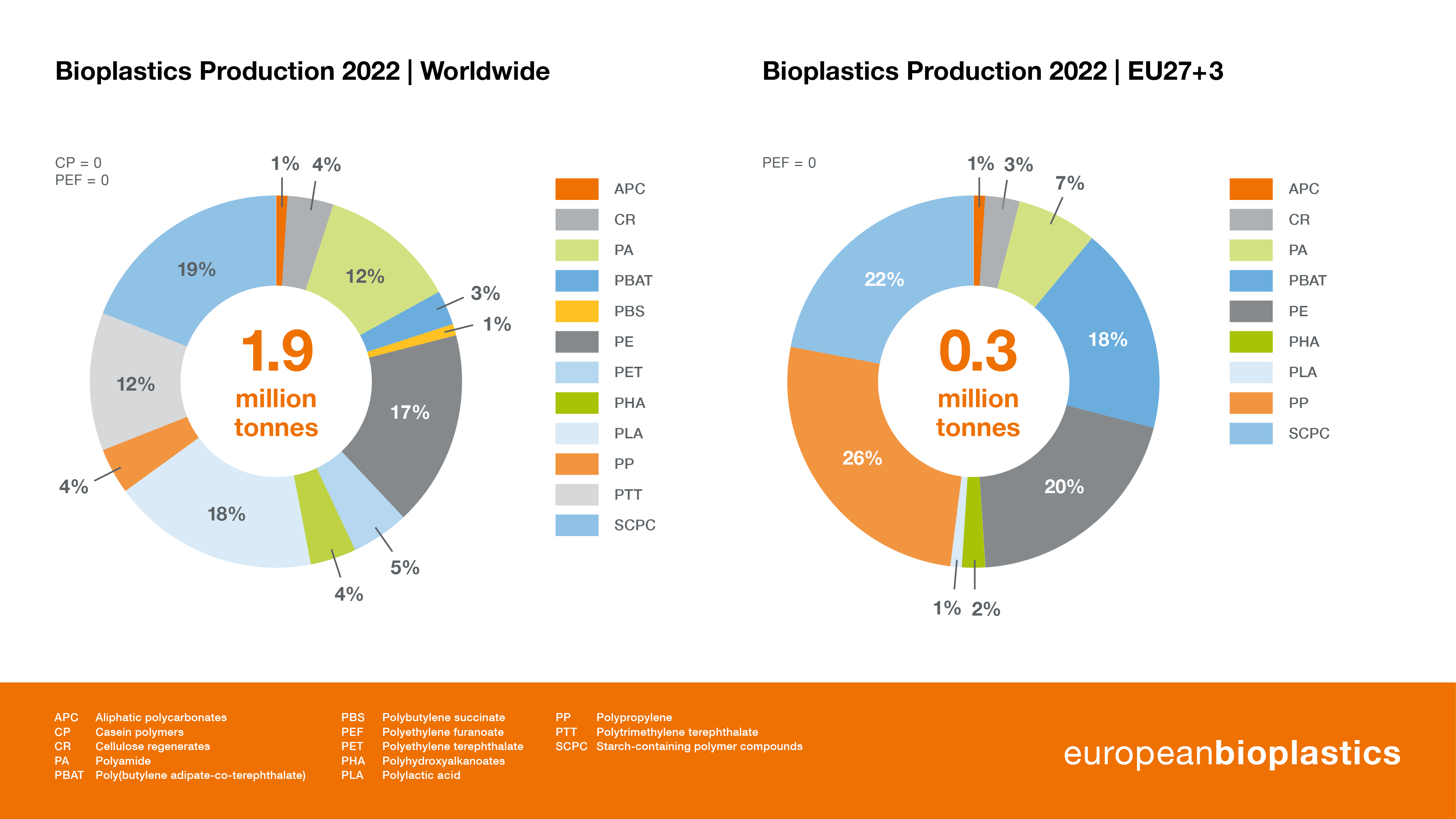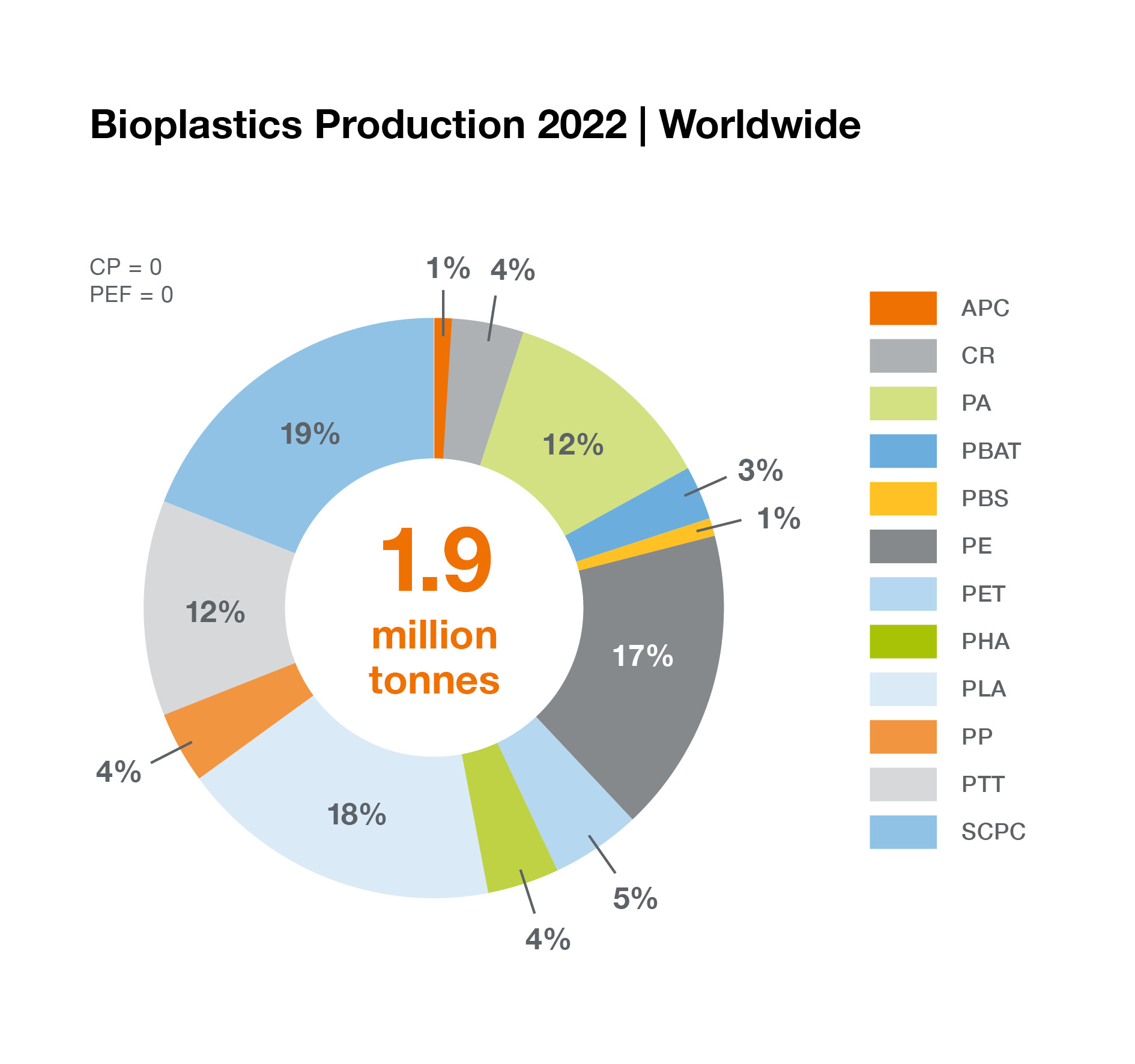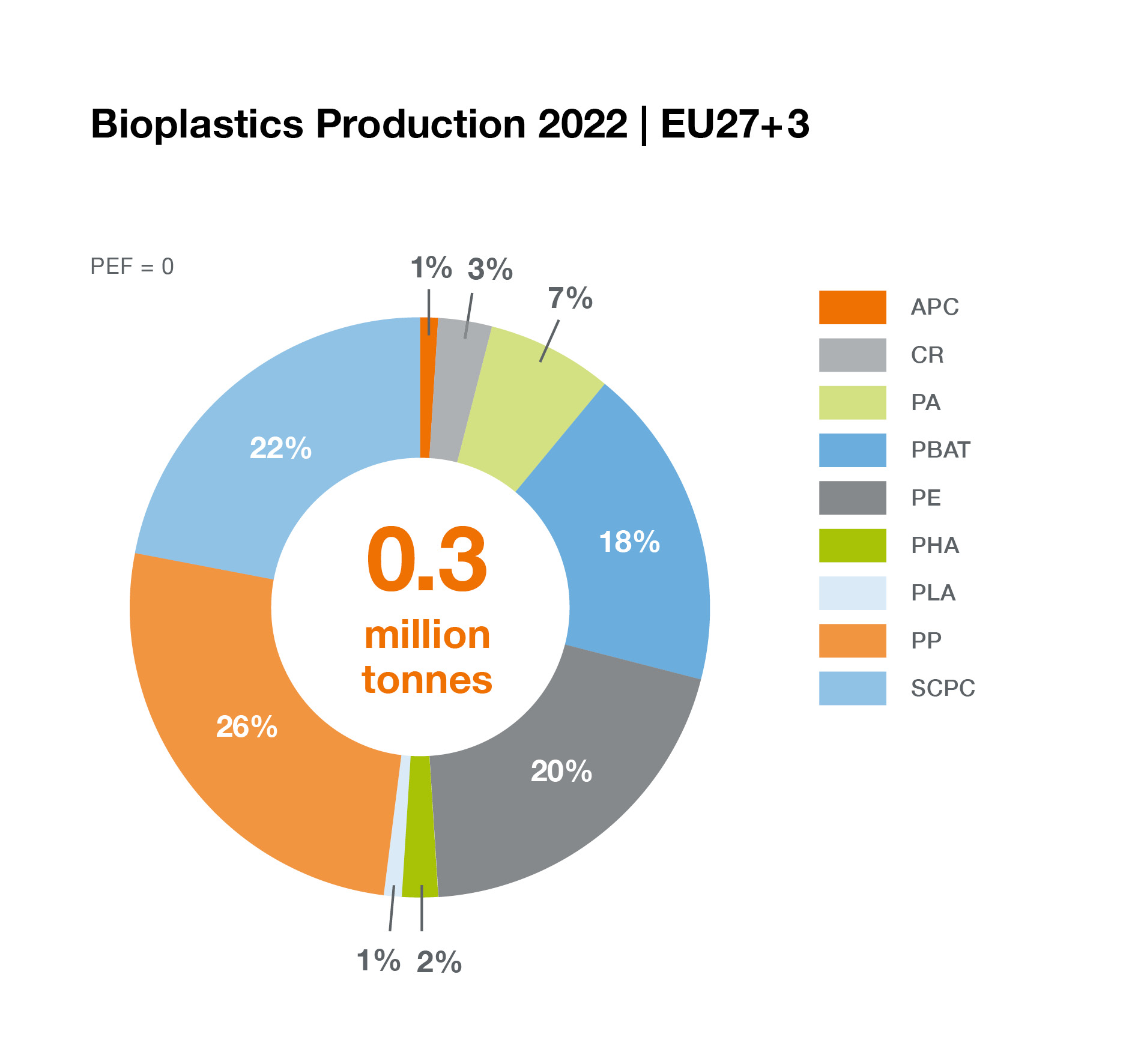In a joint effort to offer transparency to EU stakeholders, nova-Institute has worked with European Bioplastics and Plastics Europe to provide the bioplastics production data for the year 2022. The data is based on the nova-Institute polymer production data and adapted to EUBP’s bioplastics scope.

Applications include: Agriculture and horticulture, automotive and transport, building and construction, consumer goods, electrics and electronics, functional, flexible and rigid packaging, fibres, and others.
European Bioplastics does not include data on cellulose acetate, EPDM, epoxy resins and polyurethanes based on their bioplastics scope.
On top of EUBP’s comprehensive market data report on bioplastics production capacities released every year at the beginning of December, and in collaboration with nova-Institute and Plastics Europe, EUBP will now also release this production data, which shows that 86% of the production capacities have been reached in 2022.
Hasso von Pogrell, Managing Director at European Bioplastics, declared: “Transparent and consistent data are the keys to a thriving bioeconomy in Europe. They enable EU stakeholders and the industry to make informed decisions, develop new products, and create a supportive legislative framework accordingly”.
Virginia Janssens, Managing Director at Plastics Europe: “We are excited to partner with the EUBP and the nova-Institute to provide the most comprehensive plastics production data, now including bio-based plastics data. Plastics Europe is committed to continuously adapting its datasets to offer the best available data to help assess, track and accelerate our industry’s transformational journey towards circular and net-zero plastics in Europe. Increasing the use of bio-based plastics as an alternative to fossil-based plastics is part of the solution”.
“For new markets, which are inevitably niche markets to begin with, it is difficult to obtain reliable market data. It is now a milestone that the three world-leading institutions are pooling their expertise and presenting their data together, by polymer and by application, harmonising the data for the first time”, says Michael Carus, CEO nova-Institute.


